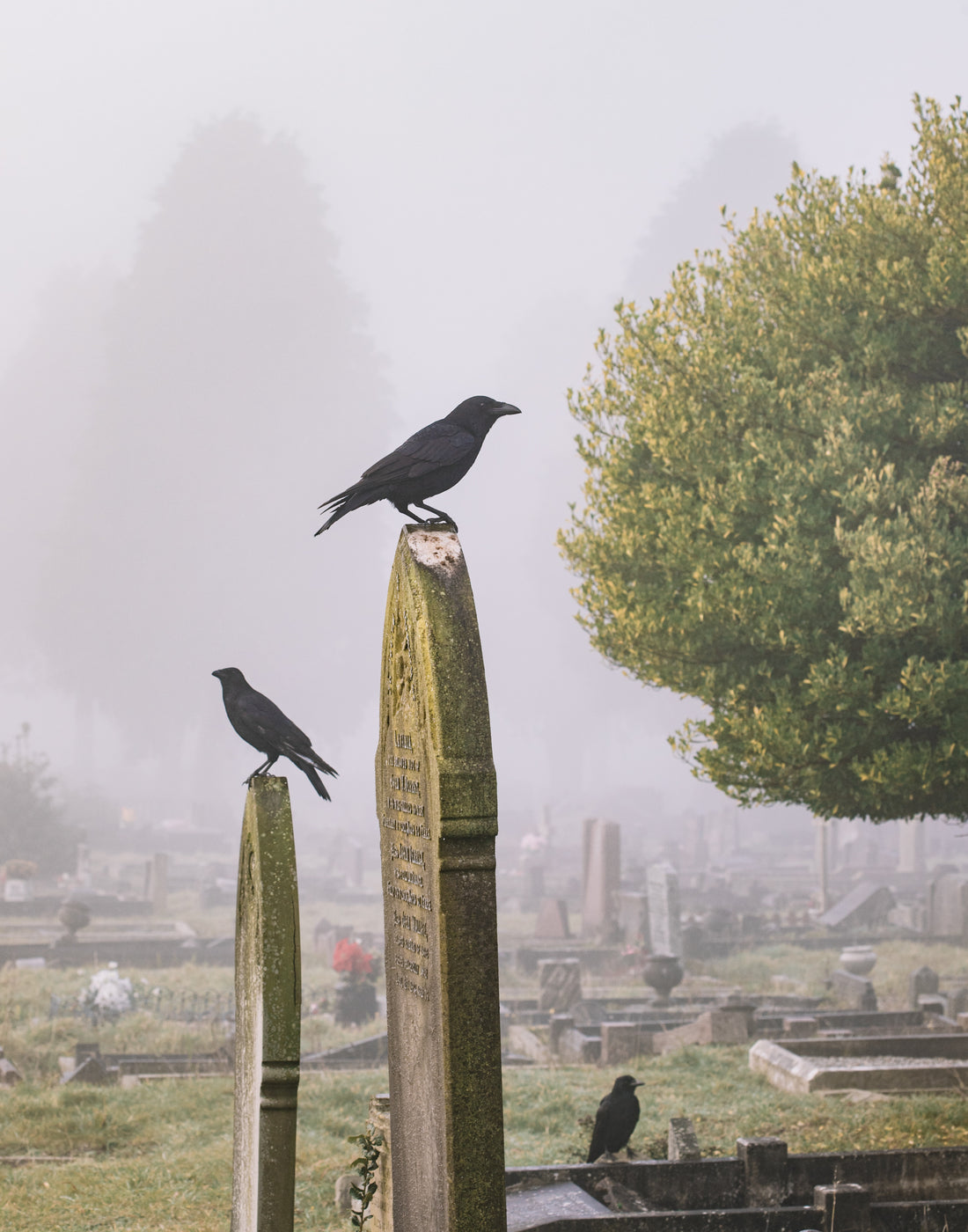
The Lore of Huginn & Muninn: Where Ravenback Supply Co. Gets Its Name
Share
We often get asked about our logo and where it comes from. Why did we choose ravens? What does it mean? Why "Ravenback"?
To know the ravens in our logo and business, one must know Norse mythology, particularly Odin, the all-father and high one. On Odin’s shoulders sits two ravens: Huginn and Muninn. They are often depicted as Odin’s faithful companions and messengers, serving various roles in the Norse cosmology. The names "Huginn" and "Muninn" are Old Norse words that can be roughly translated to "thought" and "memory" or "mind," respectively.
The earliest and most well-known mention of Huginn and Muninn comes from the Poetic Edda, a collection of Old Norse poems that date back to the 13th century. One of the poems, called Grímnismál (The Sayings of Grímnir), features Odin providing a description of his ravens to a young prince Agnar.
As is here said:
“Huginn and Muninn
Fly every day
Over the great earth.
I fear for Huginn
That he may not return,
Yet more am I anxious for Muninn.”
These lines convey the idea that Huginn and Muninn are Odin's constant companions, flying all over the world and bringing back information to him. Huginn represents the power of thought, while Muninn represents the aspect of memory and recollection. They act as Odin's eyes and ears, helping him gather knowledge from different realms.
In Snorri Sturlusson’s 13th Century Prose Edda, we learn more about the two ravens:
In the Heimskringla, the first book “Ynglinga saga” includes an account of the life of Odin. Chapter 7 describes that Odin had two ravens, and upon these ravens he bestowed the gift of speech. These ravens flew all over the land and brought him information, causing Odin to become "very wise in his lore."
In Gylfaginning 37, it states: “Two ravens sit on Odin's shoulders, and bring to his ears all that they hear and see. Their names are Huginn and Muninn. At dawn Odin sends them out to fly over the whole world, and they come back at breakfast time. Thus he gets information about many things, and hence Odin is called Hrafnagud (raven-god).”
Huginn and Muninn are often portrayed as symbols of wisdom, knowledge, and Odin's deep connection to the broader universe. They play a significant role in conveying the god's all-seeing and all-knowing nature. The imagery of these ravens has also been used in various forms of art, literature, and modern popular culture, where they continue to serve as powerful symbols of wisdom and mystery.
Odin is clearly the god of the ravens, and ravens are known as Odin’s birds. Often seen on the battlefields, accompanying fallen warriors on their way to Valhall, and often seen as “food for the ravens”. Ravens were documented in other Scandinavian works such as Orkneyinga saga, Njáls saga, and Þorsteins saga; along with other English chronicles. Army banners of the Viking age Nordic armies depicted ravens. They were woven in such a way that the raven wings appeared to be fluttering in the wind.
Scholars have linked Odin’s relationship to Huginn and Munnin to shamanic practice. Some theories by John Lindow say that in Grímnismál stanza where Odin worries about the return of Huginn and Muninn "would be consistent with the danger that the shaman faces on the trance-state journey."
Huginn and Muninn also represent heathen concepts of the “fylgja." This is a concept with three characteristics; shape-shifting abilities, good fortune, and the guardian spirit. They can also represent “hamingja", the ghostly double of a person that may appear in the form of an animal. We know that Odin can shapeshift, and when the two ravens fly out to get him the wisdom of Midgard and beyond, it supports the claim. Bernd Heinrich theorizes that Huginn and Muninn, along with Odin and his wolves Geri and Freki, reflect a symbiosis observed in the natural world among ravens, wolves, and humans on the hunt.
In summary, Huginn and Muninn are two iconic ravens from Norse mythology that serve as messengers and companions to Odin, symbolizing thought and memory. Their presence in mythology highlights Odin's connection to the world and his pursuit of knowledge and wisdom.
Ravens represent prophecy, higher intuition, and intelligence. Because of their dark appearance, ravens are often misunderstood and are symbolized as bad omens, but when it comes to their true nature, these animals become manifestations of strong spiritual power and clairvoyance.
With a powerful iconography and impactful story within the Norse sagas and lore, we have always felt connected to these beautiful birds. In the same way the Ravens would travel for Odin and bring him wisdom, we like to think of ourselves as spreading our art and own wisdom with Ravenback Supply Co. We each have our own thought and memory, like two ravens on our back whispering wisdom and learnings they've picked up along the way we call life.
